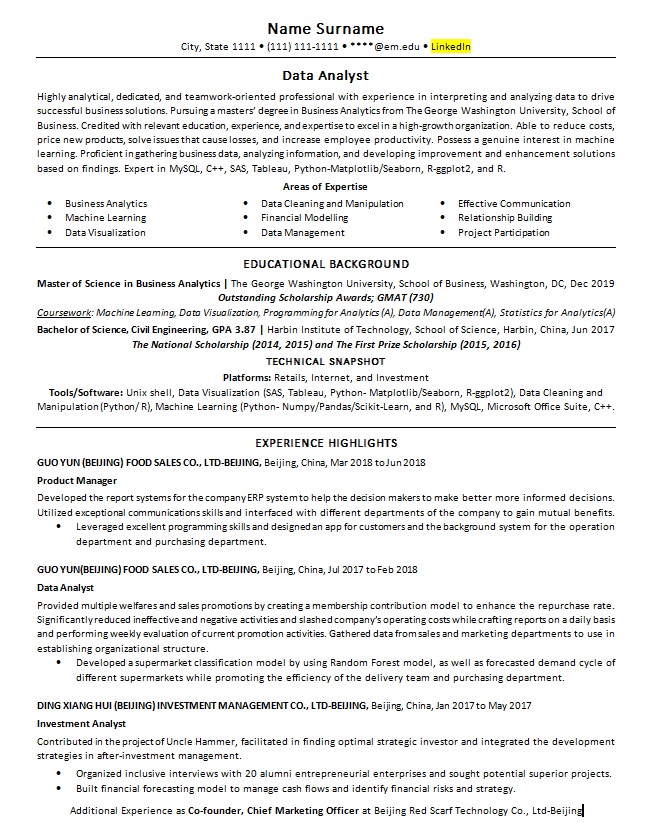Key points
The first thing to think about when writing a resume is to have a clear structure. Remember that the document required for employment must be easy to read and understand. Therefore, it is recommended to divide your resume into several key points.
Education
It is believed that a professional and highly qualified analyst cannot become an expert without higher education.
That is why the vast majority of employers will pay special attention to whether you have a degree.
Also, due to the fact that the profession of an analyst is quite in demand and is highly competitive, the level of the university in which you studied is important – prestigious universities in the capital are considered an advantage.
However, if you graduated from a small institute, then you should not be discouraged since the presence of certificates of completion of additional courses and training in your resume can have a positive effect on a potential employer.
Professional skills and abilities
This point is the most important block of the summary of any analyst. Thanks to the information you indicate in this column, the employer will judge you as a specialist. Depending on the specialization and the place of work, the required competencies may vary. However, more or less standard analyst skills include:
- understanding business processes in detail;
- theoretical knowledge and ability to apply in practice such systems and principles as EPC, BPMN, UML;
- business analysis skills;
- the ability to work with the processes As Is and To Be;
- the ability to develop diverse technical specifications;
- the ability to use a PC at the level of an advanced user;
- knowledge of specialized computer programs and applications;
- understanding of processes such as ITSM and ITIL;
- the ability to integrate applications and more.
Before filling out this column, carefully reread the job description and indicate those competencies that will be most relevant for a particular place of work.
To get a high-level or leadership position (for example, as the head of the analytical department in an international company), you will need work experience. Moreover, its duration will entirely depend on the wishes of the employer. In this regard, it is important to list all those companies where you have previously worked as an analyst in the resume in chronological order.
Even though the points described above are key in any analyst’s resume, the document for hiring should also contain other information: contact information, your personal qualities, and hobbies, as well as any additional information relevant to the position.
How to write?
For employment as a data analyst, business process analyst, as well as system or financial specialist, it is essential to provide the employer with a well-written resume.
There are certain rules for writing it.
So, the length of a business resume intended for employment should not be more than 1 page. Remember that the employer receives many responses, and he physically will not have enough time to read voluminous materials. To ensure that your resume does not go beyond the proper size, you will also have to make sure that you have not included unnecessary information in the document (for example, biographical details or unnecessary stories about your personal life).
For your document to be easily read and understood by the employer, it must be structured. To do this, divide your resume into separate sections and columns. Moreover, it is desirable to highlight subheadings with different font sizes.
When writing a document, only the official business style is allowed. Thus, you will make it clear to the employer that you have the necessary knowledge of business etiquette and know how to communicate with representatives of the corporate world. Any colloquial and artistic phrases are unacceptable. Good Luck!




















